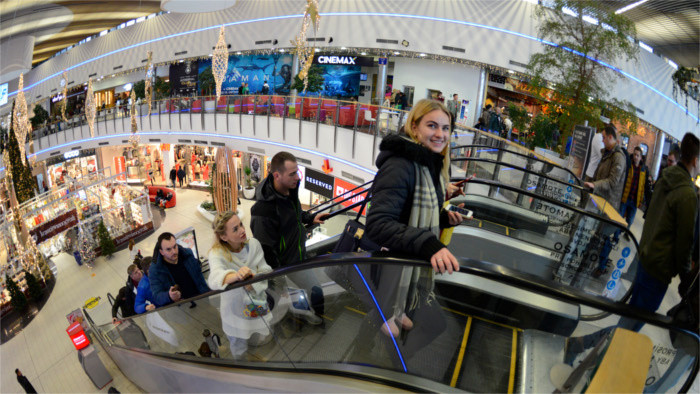At the end of November 2023, Eva Sadovská from Wood & Company published an analysis on Slovaks shopping mood in December connected to Christmas. In this show, we will present the results of it. We will provide travelling news and tips for trips around Slovakia.
Christmas Shopping Máte problém s prehrávaním? Nahláste nám chybu v prehrávači.
Christmas is coming and with it, not only in Slovakia, comes shopping. According to the Wood&Company analysis, the end of December is the peak season for businesses. What do consumers buy for Christmas for their loved ones? A mother of 2 kids, Katka from Bratislava sticks with the local tradition of sending a letter to Jezisko or Baby Jesus. She agreed to share a bit of her kids’ wish lists as for children in Slovakia, it is Baby Jesus who brings them Christmas presents and places the boxes under the Christmas tree.
At the end of November 2023, Eva Sadovská from Wood & Company published an analysis on Slovaks shopping mood in December connected to Christmas. The Last quarter is the strongest one for traders. Retail sales then account for 28 percent of those for the whole year. In December, retailers tend to earn tens of percent more than in other months of the year.
According to the analyst, retailers of electronics, drugstores, food, clothing, footwear, books and toys are doing particularly well. E-shops are also recording higher sales as well as stallholders. The latter especially thanks to the Christmas markets.
Slovaks will pay more for groceries for Christmas dinner in 2023. Analyst Eva Sadovská expects it will be by 8 to 10 percent more than in 2022.
"According to data from October 2023, food inflation was at nine per cent. We paid the most for sweets, almost 18% more. We also paid more for baked goods, fish and seafood, meat and dairy products. Fruit and vegetables were also more expensive than in 2022. Oils and fats, on the other hand, cost us less than in 2022. We will pay 10% more for soft drinks in 2023 than last year."
Not only groceries cost more than last year, 2022. Even Christmas presents got more expensive in 2023.
“The most significant price increase was observed for drugstore products. Specifically, by more than 8%. Musical instruments, jewellery, clothes, toys, books, coffee machines, computers and bicycles became slightly less expensive. Mobile phones and watches were the least expensive. If some consumers buy gifts for their pets, these goods have become more expensive by almost a quarter.”
Slovaks felt the increase in prices in 2022 and 2023 also due to th high level of inflation. Analyst Eva Sadovská from Wood & Company claims the consumers are becoming more careful with shopping. Low-income households, such as single-parent families, households with unemployed members, pensioners etc., can be even devastated by price increases.
On the other hand, analyst Eva Sadovská says that positive news is that the Slovak unemployment rate decreased a bit. It's getting close to 5%. At the same time, consumer sentiment was improving. The analyst informs that citizens were optimistic about the economic situation in Slovakia, but also about their financial situation at home in terms of savings and purchases. Eva Sadovská describes the difference between the years 2022 and 2023.
“Last year, 2022, people used their so-called enforced savings for shopping. These were from the two year long corona virus crisis due to lockdowns and almost no possibility to spend money. This year, 2023, financial reserves weren’t that huge and this was reflected in weaker consumption.”
Many Slovaks are going into debt and taking out loans for Christmas shopping. Eva Sadovská, an economic analyst warns that people should think about their Christmas shopping in advance. If we don't have enough money, she recommends building up a reserve for the Christmas holidays in addition to the traditional financial reserve.
“Everything we buy becomes waste sooner or later. In December, each Slovak produces 45 kg of municipal waste. The biggest source of waste during Christmas is packaging. For example, if we order something from an e-shop, we unwrap it, throw away the packaging and wrap it up again. Or we repackage what we have already wrapped to make it look nicer.”
“Another major waste is kitchen bio-waste. It often happens that people buy a lot of food for Christmas and cook more food than they eat. So then this waste is produced.”
Analyst Eva Sadovská believes that making a shopping list and buying only what you need can be a way to avoid wasting food this Christmas. As she concluded, quality is more important than quantity when it comes to Christmas shopping.


